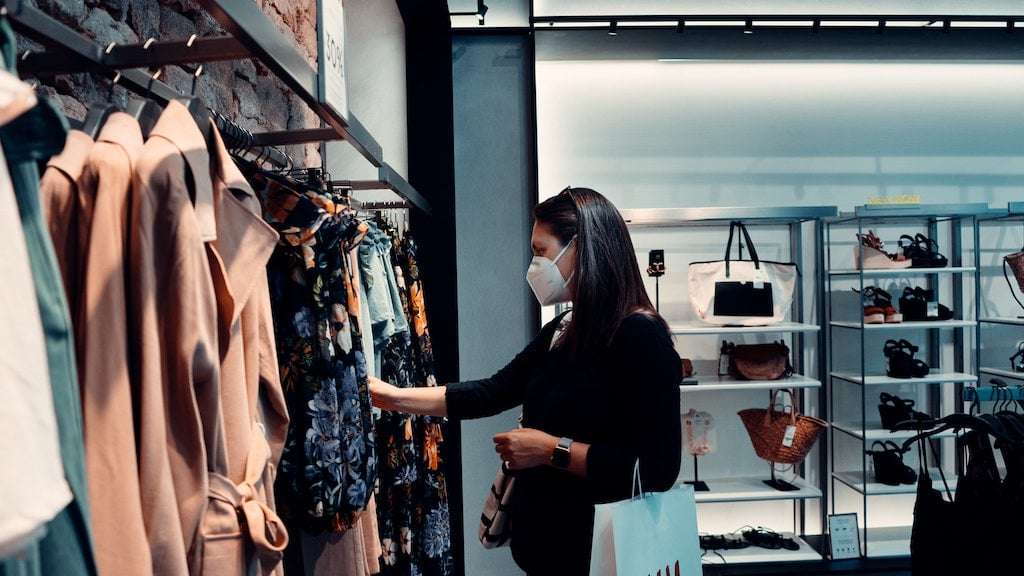What is a conscious consumer? From buying only what you need to shopping locally, here’s how to minimize the environmental impact of your shopping habits.
Conscious consumerism is on the rise. Shoppers — especially younger generations — are opting to support brands that align with their values and don’t contribute to the degradation of the planet. Put simply, they want more sustainable products, and they want them now.
A 2021 report by marketing firm Acosta found that sustainability initiatives ranked high on the list of consumer preferences. Environmentally-friendly practices factor into the buying habits of more than half of shoppers.
But consumers don’t just prefer eco-friendly products — they’re willing to pay more for them, too. About 80 percent of consumers are willing to spend more on products like plant-based meat and personal care items.

“Consumers are continuing to place an emphasis on sustainability when making purchasing decisions, showing that eco-friendly lifestyles are here to stay,” Colin Stewart, Acosta’s executive vice president, said. “Retailers have an opportunity and responsibility to think through their environmental footprint and deliver value in ways that matter increasingly more to their customers.”
The impact of conscious consumerism
From food to beauty products, eco-conscious consumers consider the social, economic, and environmental impact of an item before buying it. They choose not to support companies that compromise in any way their workers, the environment, or animals for the sake of profit.
Some questions a conscious consumer may consider before heading to the check-out lane include: Is the product ethical? Was it tested on animals? Is it Fair Trade Certified? Does the company that sells it foster good working conditions? The impact of conscious consumerism is far-reaching, reducing the mass consumption and production of a myriad of products. When it comes to the environment, it helps to curb the likes of waste and pollution.

Take the fast fashion industry, for example. According to a 2020 study published in the journal Nature, it generates about 92 million tons of waste and consumes 79 trillion liters of water each year. It’s also responsible for about ten percent of global carbon emissions. By opting for more sustainable clothes — or by choosing to shop second-hand — conscious consumers can help to reduce the negative environmental footprint of the fast fashion industry.
How to be a conscious consumer
Interested in being a conscious consumer but have a tight budget? Worry not — being a conscious consumer doesn’t mean you have to break the bank in order to be good to the planet. Here are five easy ways you can incorporate sustainability into your shopping habits.
1. Buy only what you need
The most important aspect of being a conscious consumer is to avoid contributing to the unnecessary production of items. By consuming less and buying only what you need, you can help reduce the amount of waste and pollution generated by brands, as well as help minimize the use of natural resources like water and land for the production of goods.
An easy way to succeed in buying only what you need is by making a shopping list before you go to the store. If you’re going grocery shopping, take inventory of what you already have stocked in your cupboards and fridge. This will help you cut back on unnecessary purchases once you get to the grocery store.
2. Shop sustainable and ethical brands
Another great way of driving down the environmental footprint of your shopping habits is by supporting brands that foster sustainability and other ethical initiatives. Zero-waste brands are a great place to start. Do a little research on a company before buying from them.

And be on the lookout for sustainability certifications, such as Fair Trade Certified, which means a product adheres to certain environmental, economic, and social standards, and Global Organic Textile Standard, which outlines processing standards for organic materials.
3. Shop local, small businesses
Want to buy all of your favorite goodies without harming the planet? Shop locally. In addition to boosting the economy, shopping small, local businesses help to minimize the lengthy journey a product must travel to get to you—which means less pollution generated.
By visiting local shops, you’re also able to meet the people producing the products. This can help you get a better idea of what their sustainability practices are, such as if they omit unnecessary packaging or avoid the use of pesticides when growing food.
4. Quality, not quantity
So you found an adorable blouse at H&M and are considering getting one in every color available — not so fast. Literally. Although they may be cheaper, fast fashion pieces are typically mass-produced and are of lower quality, meaning they’ll probably wind up in landfills quickly.

On the other hand, high-quality items from slow-producing companies — whether they be clothing, shoes, furniture, food, or beauty products — will generally last longer, making them a more sustainable option.
5. Reduce your waste
Even if you put tips one through four into action, you’re still going to generate some type of waste when it comes to your purchasing habits. But when you do, make it a point to reduce, reuse, and recycle.
Has your slow fashion garment run its course? Upcycle it into cleaning rags. Do you have leftover food from your trip to the local farmer’s market? Compost it. Have an old iPhone lying around after you upgraded to a new one? Recycle it. By being mindful of what you buy and what you throw away, you’ll be able to greatly minimize your environmental footprint and easily lessen your impact on the planet.
Related on Ethos:


